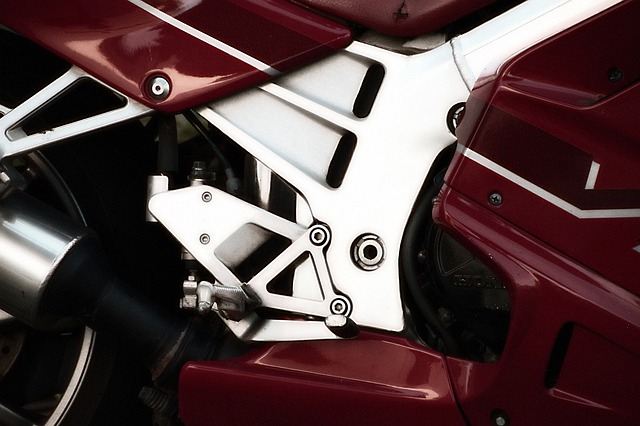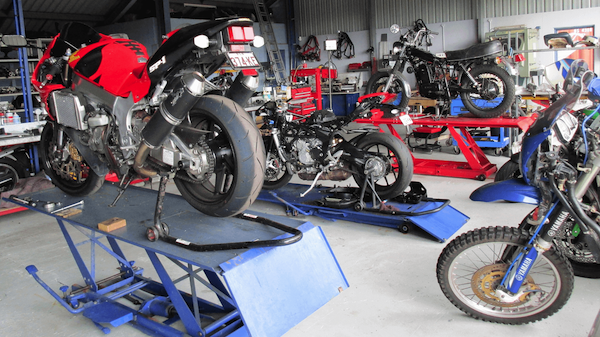Do you want your motorcycle helmet to stand out from the crowd? Wrapping it is an excellent way to give it a unique look and personalize it.
You might think that wrapping a helmet is difficult or complicated, but in reality it’s not! With just a few simple steps and materials, you can make your motorcycle look like new again with a customized wrap.
It doesn’t matter if you’re an experienced wrapper or a beginner – this guide will walk you through everything you need to know about how to wrap a helmet quickly and easily.
So let’s get started on transforming your ride into something truly special!
Key Takeaways
- Wrapping a motorcycle helmet is a simple and easy way to personalize it and give it a unique look.
- The material chosen for the wrap should provide protection from scratches and wear.
- Proper cleaning and preparation of the helmet surface are essential before wrapping.
- Use a heat gun to seal the edges of the wrapping material.
Choose the Right Material for Wrapping
If you’re looking to wrap your motorcycle helmet, the material you choose is key! When selecting a wrap for your helmet, keep in mind that it needs to provide protection from scratches and wear.
Many wraps use a protective coating over the adhesive material, so look for one that’s durable and will last. You’ll also want to consider the type of adhesive used; some are removable while others are permanent, so make sure you select the appropriate option for your needs.
Additionally, be sure to check if there are any special instructions or precautions regarding application or removal of the wrap before purchasing.
With careful consideration of these factors, you’ll be able to find a suitable wrap that offers plenty of protection and looks great on your motorcycle helmet!
Clean the Helmet Surface
Before attempting to clean the helmet surface, make sure it’s free of dirt and debris. Use a damp cloth and mild detergent to gently scrub any excess dirt or grime. Wear gloves for safety precautions, as some cleaning supplies can be harsh on skin.
When finished, rinse with water and allow the helmet to air dry thoroughly before wrapping. Be careful not to use too much water – you don’t want the helmet interior becoming wet or damaged in any way. Wipe down the surface with a soft cloth afterwards to remove any residue from cleaners or solvents used during cleaning.
By taking these steps, you’ll ensure that your motorcycle helmet is completely clean before wrapping it up for a new look!
Prepare the Helmet for Wrapping
Once the helmet is clean, it’s time to get it ready for its new look! Before wrapping, you’ll need to determine which coating types and adhesive selection will best meet your needs.
To do this:
- Remove any existing coating from the surface of the helmet using a plastic scraper or sandpaper.
- Apply a primer specifically made for plastics to ensure that any adhesives and coatings adhere properly.
- Sand lightly with a fine grit paper to create an even surface texture before applying the adhesive or wrap material.
By following these steps, you’ll ensure that your helmet is prepped for wrapping and ready to take on its new look!
Prepare the Wrapping Material
Smoothing on the adhesive, you’ll transform your helmet into a sleek and stylish masterpiece. To properly prepare the wrapping material for your motorcycle helmet, make sure to measure it accurately and secure the adhesive with tape.
Measure twice and cut once to ensure that you have enough material for your project. The wrapping material should cover all sides of the helmet evenly. Make sure to leave an extra inch or two at each end of the covering so that you can wrap it around and secure it with adhesive.
Secure any overlapping areas with additional adhesive or tape as needed. With proper preparation, your motorcycle helmet will be ready for a jaw-dropping transformation!
Cut the Wrapping Material to Size
Now carefully cut the adhesive-backed wrapping material to your helmet’s exact measurements, making sure to leave a few extra inches at each end. To make the job easier, here are some helpful tips for you:
- Measure twice and mark on the material with a pencil or marker before cutting.
- Make sure that you use scissors that’re sharp enough to easily cut through the material.
- Consider using an X-Acto knife to get more precise cuts if needed.
- Select an adhesive that won’t damage your helmet’s paint job when it’s removed.
- Take your time and be patient – measuring and cutting can be time-consuming, but it’ll pay off in the end!
Apply the Wrapping Material
Carefully peel the adhesive backing off of the wrapping material and stick it onto your lid – you’ll be amazed at how quickly this transformation happens!
When applying the wrapping material to your helmet, keep safety considerations in mind. Make sure that no air pockets are created and that the wrapping is firmly adhered. Additionally, pay attention to design choices when selecting a pattern or color for the wrap; you want something that’ll look good and last long.
For best results, start from one side and work your way around, carefully smoothing out any wrinkles as you go. Clean up any excess adhesive with rubbing alcohol before allowing it to dry completely.
With patience and care, you can have a professionally wrapped motorcycle helmet in no time!
Finishing Touches
Once you’ve applied the wrapping material to a motorcycle helmet, there are a few finishing touches that need to be taken care of.
Trim any excess material with scissors or a sharp knife.
Smooth out any air bubbles with your hands or a cloth dampened in soapy water.
Use a heat gun to seal the edges.
Doing this will give your helmet the professional finish it deserves!
Trim any excess material
Trim off any extra material swiftly and decisively to complete the job.
When wrapping a motorcycle helmet, you should use alternative materials that are designed for temperature control so that your head stays comfortable throughout the ride.
The best way to finish the project is to take a pair of scissors and go around all edges of the helmet, removing any excess material. It’s important to be precise in this step as it can make or break the overall look of your wrapped helmet. Make sure to cut close, but not too close, as you don’t want to accidentally remove too much fabric.
Once complete, use a lint roller or damp cloth to remove any small pieces of fabric left over from trimming.
With this final step completed, your custom-wrapped motorcycle helmet is ready for its first ride!
Smooth out any air bubbles
| Smooth out any air bubbles that may have formed by gently pressing them with your fingers. After the wrap is applied, use a heat source such as a hair dryer to help adjust the material and adhere it properly to the helmet. The correct heat setting for this process depends on the type of material you are using, so be sure to check what setting is recommended before applying any heat. | Covering Techniques | Heat Settings |
|---|---|---|
| Wrapping | Low-Medium | |
| Stretching | Medium-High | |
| Scrunching | High |
Seal the edges with a heat gun
Finally, seal the edges of the material with a heat gun to ensure it’s properly secured. According to a survey conducted by NHTSA, over 90% of motorcyclists who wear helmets are more likely to survive accidents.
To use a heat gun correctly and safely:nn1. Make sure you have temperature control so you can adjust the level of heat based on the material you’re working on.nn2. Wear protective gear like gloves and safety glasses when using the heat gun.nn3. Use short bursts instead of prolonged exposure to avoid overheating the material or burning yourself.
When sealing the edges of your helmet with a heat gun, make sure you keep these safety precautions in mind and always maintain proper temperature control for optimal results and safety assurance!
Frequently Asked Questions
How long will the wrapped helmet last?
The bespoke design and heat protection of a wrapped motorcycle helmet will depend on the quality of materials used. Generally, it should last for years depending on how well it is looked after.
Are there any safety concerns with wrapping a helmet?
Yes, wrapping a helmet can lead to durability concerns and paint damage. Consequently, it’s important to use the right materials and techniques when wrapping helmets in order to ensure safety.
Can I wrap the helmet myself or do I need professional help?
You can wrap a motorcycle helmet yourself, with customizing options and color choices. Professional help is not necessary, but may be beneficial for achieving the perfect look.
What is the best way to care for a wrapped helmet?
You should take care of your wrapped helmet by using a protective coating, cleaning it regularly and applying sealant. This will help keep your helmet looking good and protect it from the elements.
Are there any alternatives to wrapping a helmet?
You have many Customizing Options to protect your helmet. Paint Protection and Protective Coating are two of the most popular choices; over 80% of motorcycle helmets use one or both. Whether you choose to paint, coat, or wrap your helmet, it’s important to keep it safe for years to come.
Conclusion
You can wrap a motorcycle helmet and make it look great! Just choose the right material for wrapping, clean the surface, prepare both the helmet and wrapping material, cut to size, apply the wrapping material, and finish with any details you want.
You’ll be amazed at how easy it is to transform your helmet into something unique. With just a few simple steps and some imagination, you can create a stunning new look that will turn heads as you hit the road.



